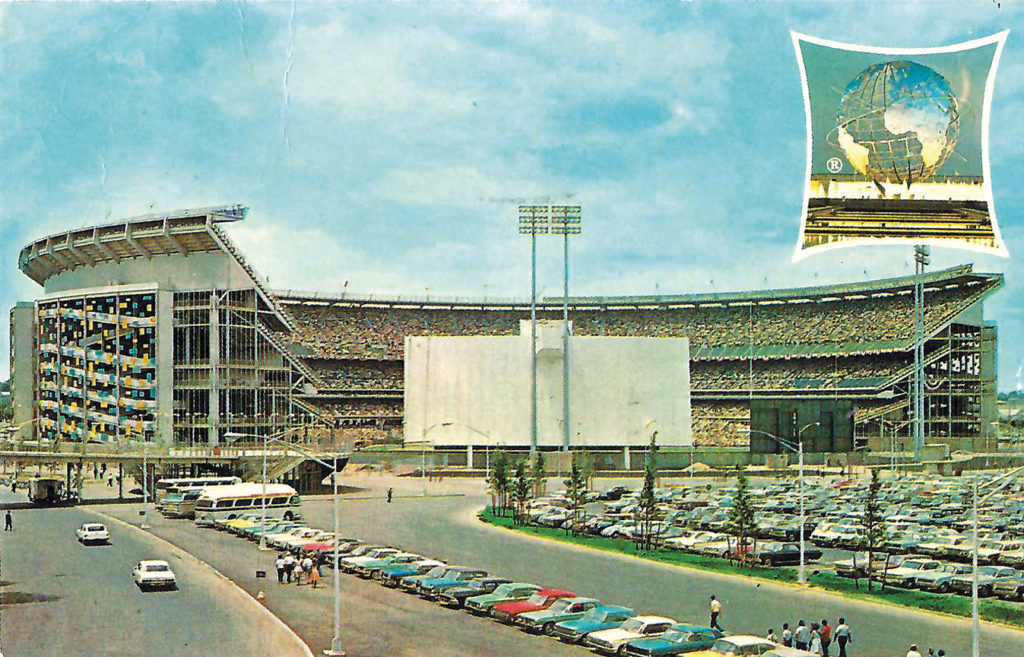
Michael Bushnell
Publisher
As we continue our chronicling of lost ballyards, no list is complete without Shea Stadium, home of the New York Mets and the football New York Jets from 1964 through 2008.
The venue was originally named Flushing Meadow Park Municipal Stadium but was soon changed to William A. Shea Municipal Stadium, named for the man who brought major league baseball back to New York after the Dodgers and the Giants left for California in 1957. The stadium replaced the Polo Grounds which we profiled in last week’s column.
In 1960, the National League granted New York an expansion franchise provided a new stadium be built. In return, then New York City Mayor Robert Wagner Jr. had to personally notify the rest of the team owners in the National League, assuring them a new facility would be built for the team.
The Mets played their inaugural season at the Polo Grounds due to construction delays at Shea. Both the football Jets and the baseball Mets moved to the new stadium for the 1964 season.
Shea Stadium opened on April 17, 1964,[15] with the Pittsburgh Pirates beating the Mets 4–3 before a crowd of 50,312 eager fans. Shea Stadium was constructed in a circular fashion with the grandstands forming a circle around the field, essentially stretching from foul pole to foul pole. The area beyond the outfield fences was mostly empty and held the bullpens and the huge scoreboard that was one of the largest in baseball at the time of its construction. The stadium was considered elegant at the time and had over fifty bathrooms and seats for 57,343 fans.
The stadium hosted a variety of events including the Beatles in 1965 when they kicked off their North American tour at Shea on August 15th, playing to a record breaking crowd of 55,500 screaming fans. In 1979 Shea was one of Pope John Paul II’s stops on his American tour. It was also the stadium where O.J. Simpson became the first Running Back in the NFL to rush for over 2,000 yards in a single season. The final baseball game at Shea was on September 28, 2008 when the Mets lost to the Florida Marlins. Demolition of the stadium began almost immediately after salvaging operations were completed in mid-October of 2008.
On January 31, Mets fans all over New York came to Shea Stadium for one final farewell. Fans took a tour of the site, told stories, and sang songs.
The last remaining section of seats was demolished on February 18. Fans watched as the remaining structure of Shea Stadium (one section of ramps) was torn down at 11:22 am.
The locations of Shea’s home plate, pitcher’s mound, and bases are memorialized in Citi Field’s parking lot.
















